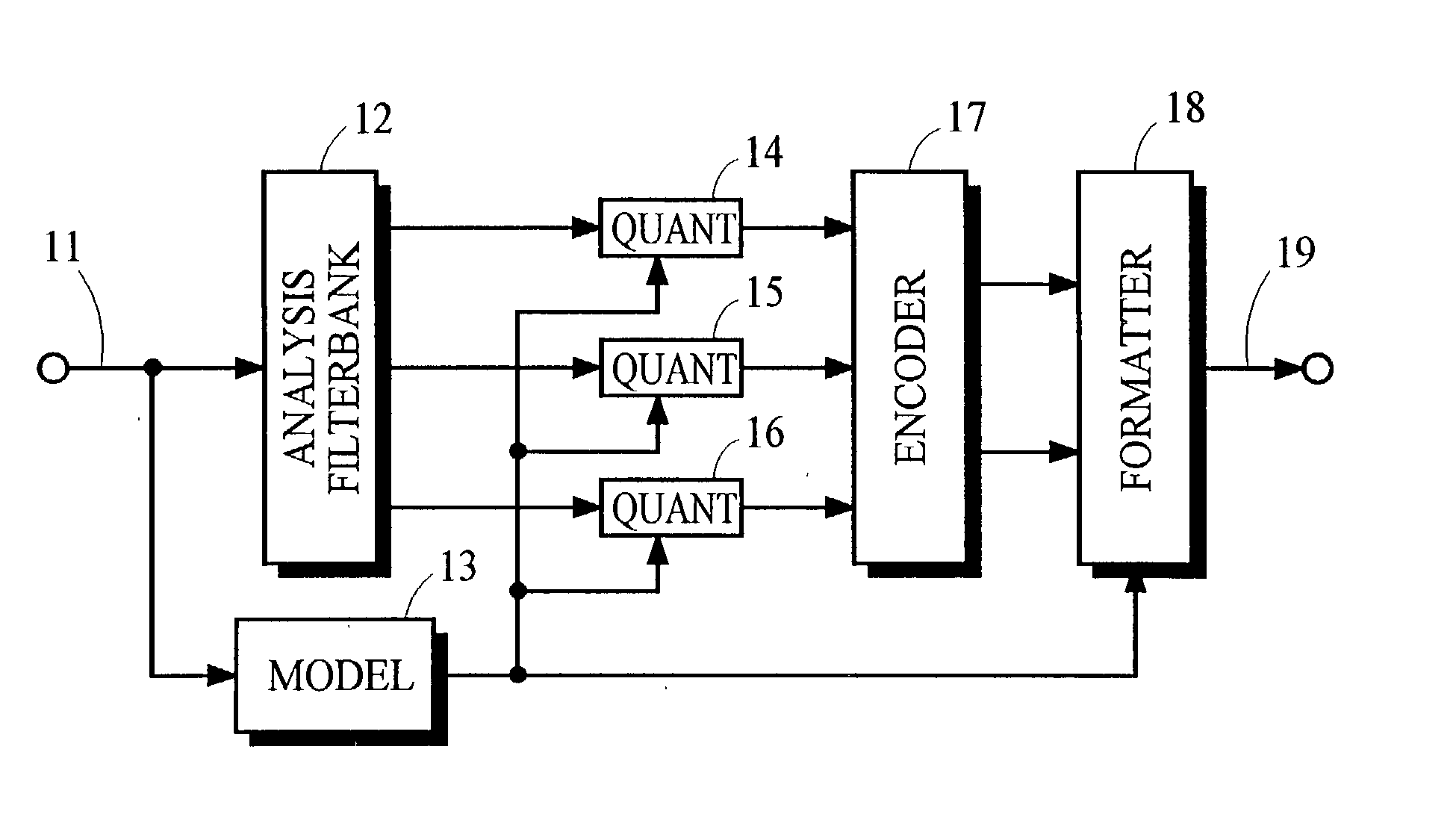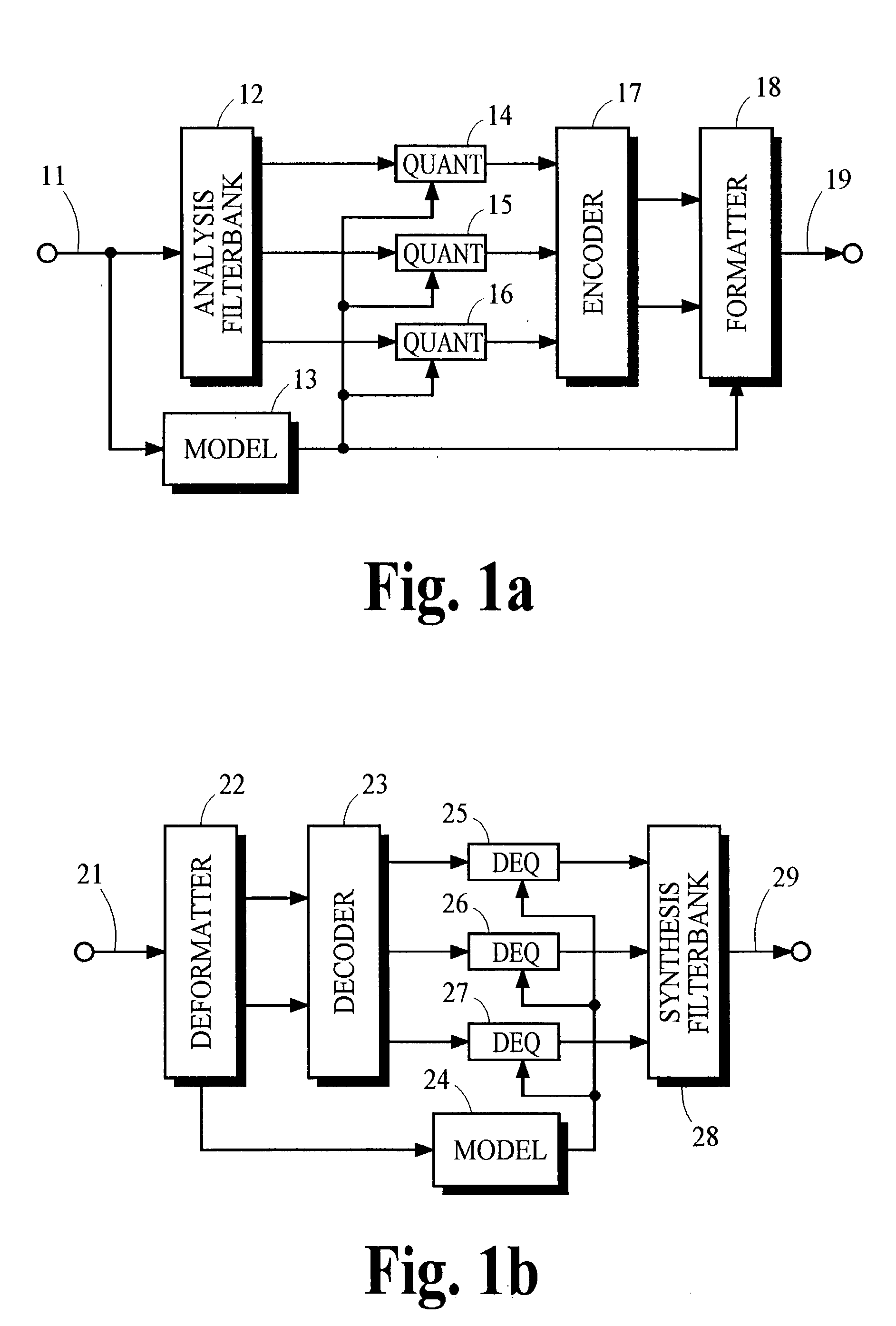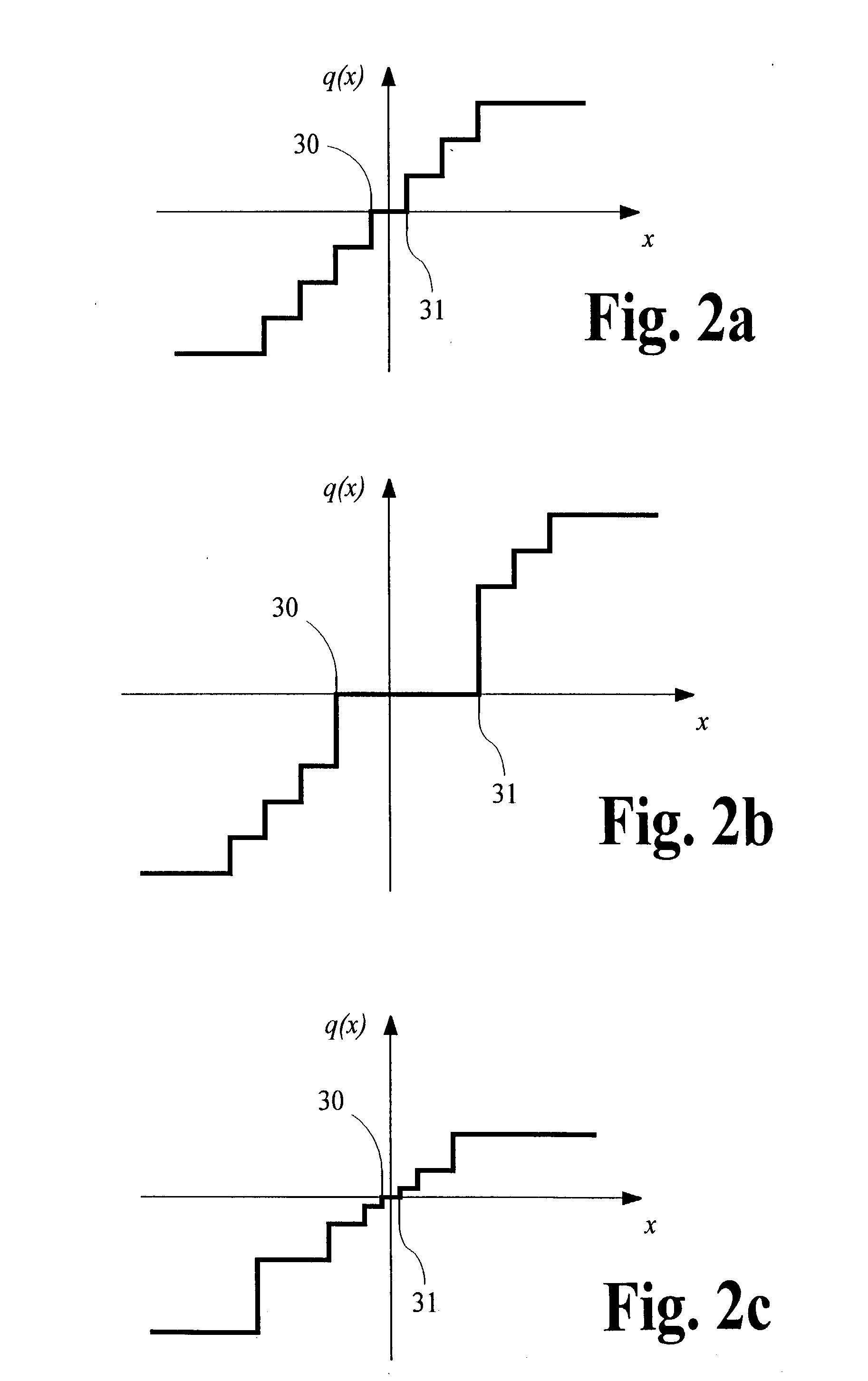Audio coding system using spectral hole filling
a coding system and spectral hole technology, applied in the field of audio coding system using spectral hole filling, can solve the problems of degrading not working as well in the wider band, and fairly well working technique, so as to avoid or reduce degradation, improve the perceived quality of the audio signal
- Summary
- Abstract
- Description
- Claims
- Application Information
AI Technical Summary
Benefits of technology
Problems solved by technology
Method used
Image
Examples
Embodiment Construction
[0032] A. Overview
[0033] Various aspects of the present invention may be incorporated into a wide variety of signal processing methods and devices including devices like those illustrated in FIGS. 1a and 1b. Some aspects may be carried out by processing performed in only a decoding method or device. Other aspects require cooperative processing performed in both encoding as well as decoding methods or devices. A description of processes that may be used to carry out these various aspects of the present invention is provided below following an overview of typical devices that may be used to perform these processes.
[0034] 1. Encoder
[0035] FIG. 1a illustrates one implementation of a split-band audio encoder in which the analysis filterbank 12 receives from the path 11 audio information representing an audio signal and, in response, provides digital information that represents frequency subbands of the audio signal. The digital information in each of the frequency subbands is quantized b...
PUM
 Login to View More
Login to View More Abstract
Description
Claims
Application Information
 Login to View More
Login to View More - R&D
- Intellectual Property
- Life Sciences
- Materials
- Tech Scout
- Unparalleled Data Quality
- Higher Quality Content
- 60% Fewer Hallucinations
Browse by: Latest US Patents, China's latest patents, Technical Efficacy Thesaurus, Application Domain, Technology Topic, Popular Technical Reports.
© 2025 PatSnap. All rights reserved.Legal|Privacy policy|Modern Slavery Act Transparency Statement|Sitemap|About US| Contact US: help@patsnap.com



